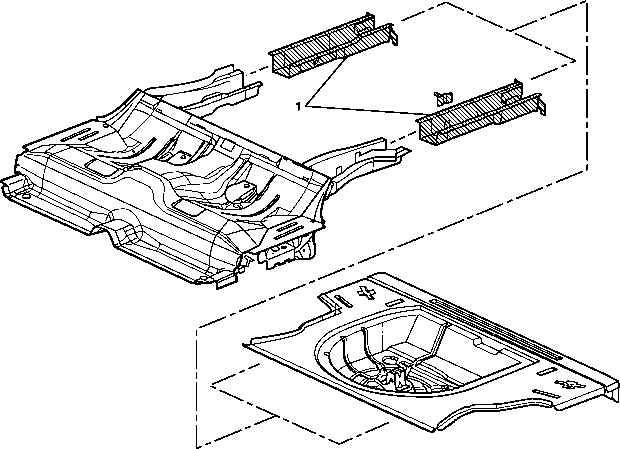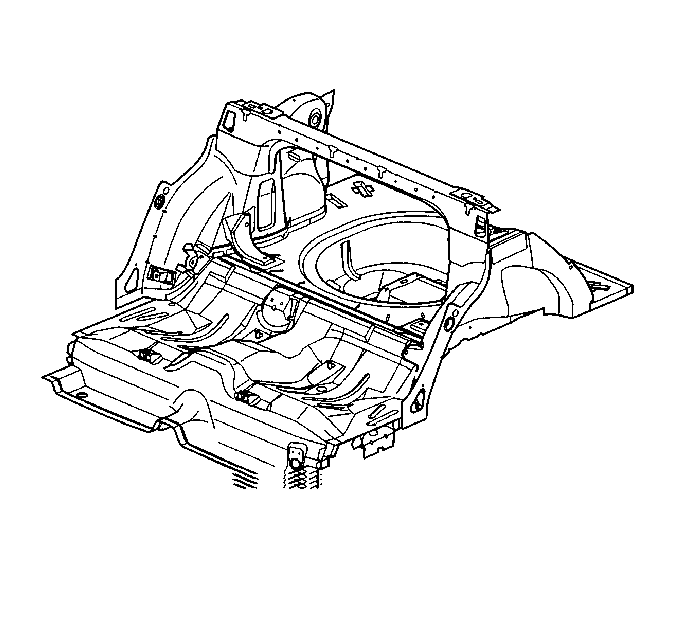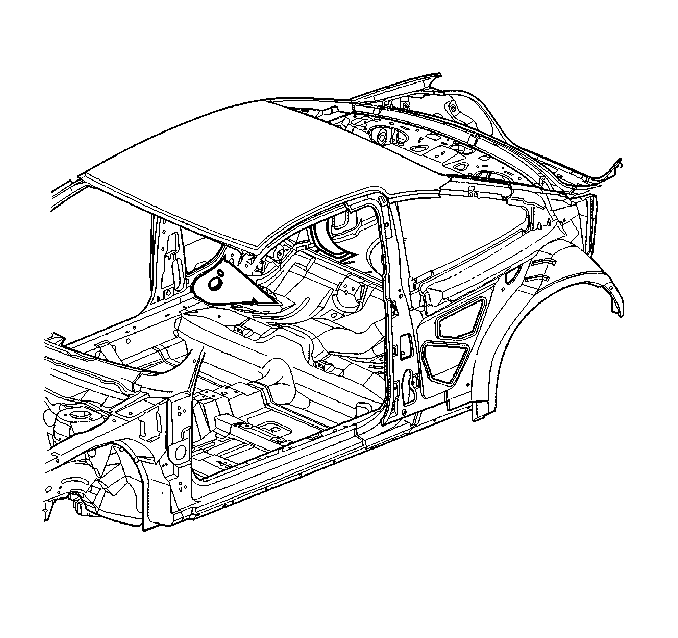For 1990-2009 cars only
Removal Procedure
Caution: Refer to Approved Equipment for Collision Repair Caution in the Preface section.
Important: The rear floor is sold as a complete assembly including the rear rails, cross members and rear extension; or sold separately as a floor pan (skin) with exhaust heat shield only.
- Remove all related panels and components, including fuel tank.
- Visually inspect and restore as much of the damage as possible.
- Remove sealers, sound deadeners and anti-corrosion materials as necessary.
- Locate factory seam at front edge of crossbar, rearward of seat back.
- Locate, mark and drill through one layer ONLY, all factory welds which secure the floor to the rails. Note the number and location of welds for installation of the floor service panel.
- Drill completely through the welds that attach the floorpan to the inner wheelhouse.
- Remove both inner wheelhouse braces. Identify the weld locations and drill through one layer of metal ONLY.
- Remove the damaged floor section.


Installation Procedure
- Prepare all mating surfaces as necessary.
- Drill 8 mm (5/16 in) plug weld holes as necessary in the locations noted from the original floor.
- Apply 3M Weld-Thru Coating P/N 05916 or equivalent to all mating surfaces.
- Position the service floor pan, check for proper fit using 3-dimensional measuring.
- Plug weld accordingly.
- Install both wheelhouse braces.
- Clean and prepare all welded surfaces.
- Apply an approved anti-corrosion primer.
- Apply body sealers and finish as necessary.
- Install all related panels and components.

Important: If the posititon of the original plug weld holes can not be determined, space plug weld holes every 40 mm (1½ in) apart. Sound deadeners along the inner wheelhouse must be removed prior to welding new panels in place.
Important: Prior to refinishing, refer to GM 4901MD-99 Refinish Manual for recommended products. Do not combine paint systems. Refer to paint manufacturer's recommendations.
